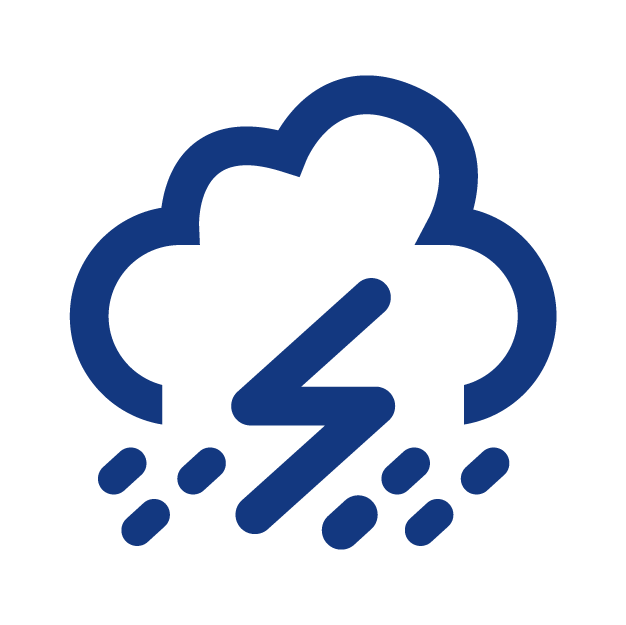
Warmer mean temperatures |
Rise in sea levels |
- persistent inundation and flooding
- loss of historic structures
- destruction of Aboriginal sites, such as coastal middens and campsites through storm surge and erosion
- permanent inundation of intertidal Aboriginal sites, such as axe grinding grooves and fish trap sites
- more frequent exposure and loss of Aboriginal traditional burial sites
- decline in heritage-related coastal economy, e.g. heritage tourism
- loss and inundation of archaeology on foreshore and coastal edge, e.g. shipwrecks, port infrastructure, seawalls and jetties
- direct and indirect impacts on historic assets and areas, and their settings from increased or strengthened engineered/physical protections
- damage to or loss of heritage value of coastal cultural landscapes due to installation of boulder breakwaters, riprap stone walls and other beach front protections
- damage or modification due to actions such as emergency response, mitigation and managed retreat
- damage from clean-up operations.
|
| Ecosystem changes and associated migration and proliferation of pests, diseases and invasive species |
- increased incidence and severity of fungal and insect attack causing harm to the building fabric, occupants and collections/archives, e.g. increased habitat for termites will impact alpine huts
- proliferation and expansion in range of invasive and non-native species
- change in marine species in response to warmer seas and increased acidification; loss of Aboriginal traditional foods (fish and shellfish) and/or resource gathering locations
- loss of species at threshold of tolerance leading to changes in distinctive character of heritage places
- changing pest and insect regimes leading to damage and loss of heritage plants and gardens, in particular loss of cool climate heritage gardens in places like the Blue Mountains and the Southern Highlands.
|

Long-term drier climate |
Drying out, desiccation, shrinkage and erosion |
Subsidence
- subsidence caused by clay shrinkage to features and structures, e.g. buildings, breaches in flood defences, dams and reservoirs, shafts and underground workings, and blockages of river courses
Erosion and destabilisation
- erosion of heritage places exposed by loss of vegetation and/or the lowering of lake, inland waterways and river levels
- destabilisation/erosion of earth structures, embankments and cuttings
- destabilisation of tips, historic mine spoil heaps and other industrial remains leading to landslides and increased potential for pollution
- increased erosion from impaired pasture growth caused by desiccation
- increased use of marginal pastures leading to erosion of archaeological remains and cultural landscapes
- wind-blown movement of marine sediments, e.g. dunes, exposing Aboriginal sites and objects.
Drying out
- lowering of water table causing loss of paleoenvironmental evidence
- changing decay and survival of organic artefacts, e.g. trackways and exposure of riverine shipwrecks
- changing use and/or abandonment of agricultural land and buildings to cope with water shortages, lack of fodder and poor harvests
- drying and stress to old growth trees, historic trees and plants and their contribution to cultural landscapes
- discovery of new historic assets in desiccated grassland and crops visible as parch and crop marks
- improved humidity levels in buildings including impacts to interiors and collections.
|
| More fire danger days and more frequent bushfires |
Built heritage
- increased risk of fire in buildings and structures from drier conditions
- damage to buried and above ground archaeology, structures and movable heritage from wildfires
- opening of timber joints and cracking of masonry in buildings from drier conditions
- increased damage from fire protection measures, such as the creation of fire trails and firebreaks.
Iconic species
- potential loss of iconic species, food, totems, etc. due to repeated high intensity fires.
Vegetation
- loss of historic plants due to fire or changes to plants in response to fire risk affecting historic landscape character
- increased risk of erosion after coastal fire damage to surface vegetation and its protective effect.
|

Warmer drier winters |
Increased fire danger in spring and summer |
- more intense fire conditions in the summer months with fire season starting earlier and lasting longer due to drier winters
- reduced viability of agriculture (where dependent on winter rains) and heritage properties that are active farms
- increased tourism potential of some regional areas through autumn and winter.
|

More frequent extreme weather |
Frequent high winds, storms and heat/cold events |
Damage from increased precipitation/high wind events
- reduced ability to prepare for storm events
- increased storm damage to features, historic buildings, settlements and structures above ground
- lack of capacity in roof and stormwater drainage systems
- wind driven rain and increased humidity reduce indoor air quality and health of building fabric, occupants and collections/archives.
Damage from increased high-energy flooding and storm events
- damage/scour to underwater, intertidal and coastal archaeology due to turbulent seas
- exposure or covering of historic assets due to increased sediment transport
- erosion of foundations and destabilisation of structures
- damage to mature trees and woodland
- cumulative impacts from multiple events
- damage from clean-up operations and modifications
- increased maintenance and repair costs.
Physical and chemical changes
- increased lightning strikes starting fires
- persistent saturation resulting in chemical changes to buried archaeology.
|
| Extreme heat/drought and cold events |
- extremes and fluctuations in weather conditions affecting physical weathering, exacerbating building material and structural problems, e.g. freeze/thaw action and shrinkage
- overheating of buildings and potential for unsympathetic additions, e.g. poorly designed air conditioning
- changing land use to cope with the impacts of extreme and fluctuating weather conditions
- increased heat and drought impacting on mature trees and woodland
- loss of traditional food sources
- increased fire risk during heatwaves and following droughts.
|
| More flooding events, increased ground moisture and precipitation |
Increased erosion, scour and other damage
- damage to historic buildings, settlements, infrastructure and designed features
- destabilisation and subsidence of archaeology on the coast edge
- erosion, damage or loss of buried and above ground archaeological remains
- increased pressure, scour and damage to water-related features, e.g. bridges, overtopping of dams
- potential adverse impact from clean-up operations and modifications, e.g. installation of property flood resilience measures.
Physical and chemical changes
- persistent saturation resulting in chemical changes to buried archaeology and cultural landscapes.
Destabilisation and pollution
- inadvertent pollution episodes from flooding and increased precipitation, e.g. dispersal of toxic/hazardous materials
- destabilisation and subsidence of archaeology on mine spoil and designed features, archaeological deposits and earth structures leading to slippage or collapse
- potential adverse impact from clean-up operations.
|


